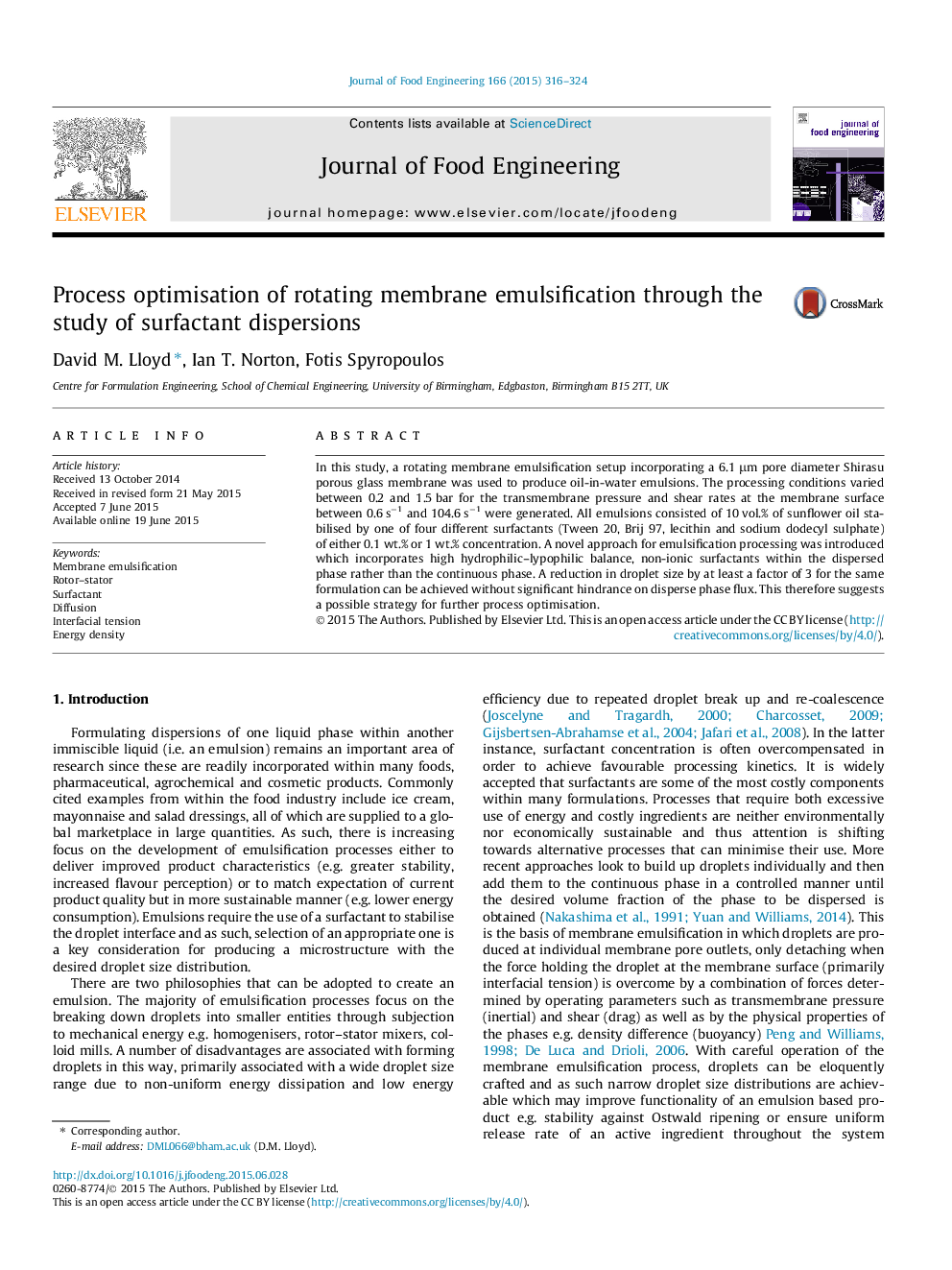| Article ID | Journal | Published Year | Pages | File Type |
|---|---|---|---|---|
| 6665221 | Journal of Food Engineering | 2015 | 9 Pages |
Abstract
In this study, a rotating membrane emulsification setup incorporating a 6.1 μm pore diameter Shirasu porous glass membrane was used to produce oil-in-water emulsions. The processing conditions varied between 0.2 and 1.5 bar for the transmembrane pressure and shear rates at the membrane surface between 0.6 sâ1 and 104.6 sâ1 were generated. All emulsions consisted of 10 vol.% of sunflower oil stabilised by one of four different surfactants (Tween 20, Brij 97, lecithin and sodium dodecyl sulphate) of either 0.1 wt.% or 1 wt.% concentration. A novel approach for emulsification processing was introduced which incorporates high hydrophilic-lypophilic balance, non-ionic surfactants within the dispersed phase rather than the continuous phase. A reduction in droplet size by at least a factor of 3 for the same formulation can be achieved without significant hindrance on disperse phase flux. This therefore suggests a possible strategy for further process optimisation.
Related Topics
Physical Sciences and Engineering
Chemical Engineering
Chemical Engineering (General)
Authors
David M. Lloyd, Ian T. Norton, Fotis Spyropoulos,
